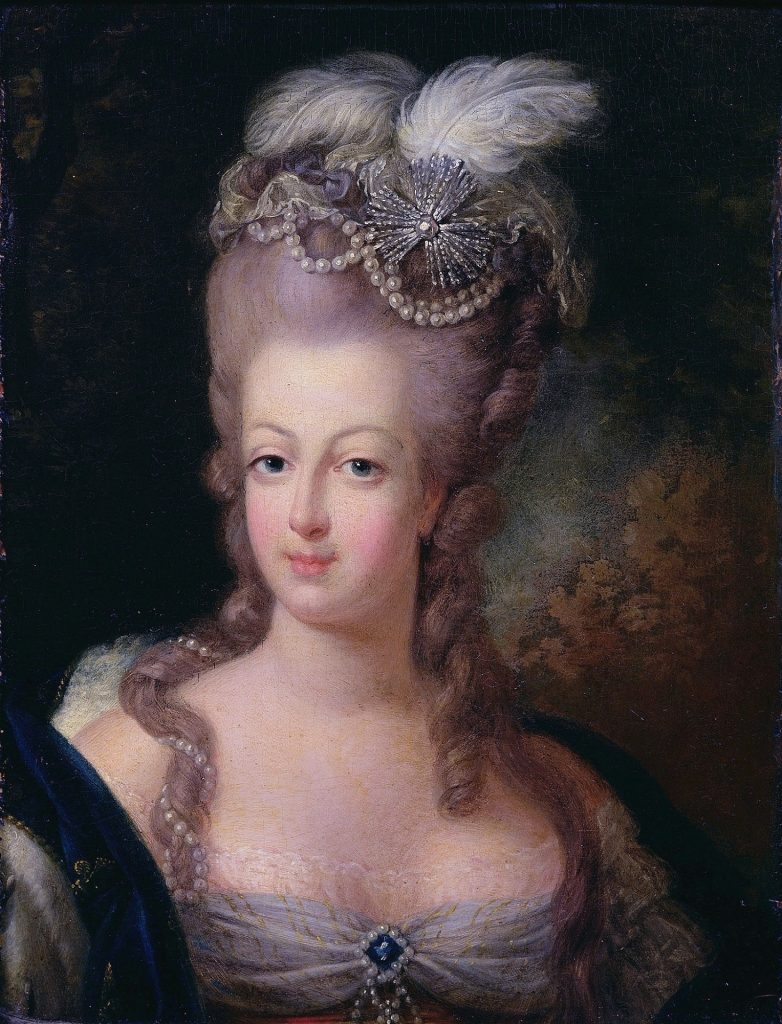
It is no secret that Marie Antoinette is one of the most polarizing figures in French history. Reviled in her lifetime, she continues to fascinate and provoke debate to this day. Was she the frivolous, vain, and selfish spendthrift that her critics made her out to be? Or was she the victim of timing, circumstance, and a blatantly misogynistic propaganda campaign? I believe the truth lies somewhere in the middle, but I must confess that the more I read about France’s ill-fated Queen, the more I’ve come to believe that Marie Antoinette got a very raw deal in history. Case in point? The Affair of the Diamond Necklace. Never heard of it? Buckle up. You’re in for a good story.
The Affair of the Diamond Necklace began in 1772, when King Louis XV asked the royal jewellers, Charles Auguste Boehmer and Paul Bassange, to design the most beautiful and most extravagant piece of jewelry the world had ever seen. They responded to this demand by crafting a necklace that contained 647 diamonds and weighed over 2,800 carats. The final price tag? Nearly 2 million livres. That’s close to $15 million USD today. The intended recipient was Madame du Barry, the King’s chief mistress at the time, but she never got a chance to wear it. Louis XV died before the necklace could be completed, and his successor, King Louis XVI, had Madame du Barry banished from the royal court.
Boehmer and Bassange now found themselves the owners of one outlandishly expensive piece of jewelry. So expensive, in fact, that they were on the verge of bankruptcy. To recoup their costs, they tried to sell the necklace to Louis XVI as a gift for his young Queen, but he refused. Apparently it was Marie Antoinette herself who balked at the price tag, stating that the money would be better spent on battleships. It is also possible that she did not wish to wear a necklace that had been made for another King’s mistress. Regardless, Boehmer and Bassange still needed a buyer. They tried to sell the necklace to another European royal families, but these efforts failed as well. It would seem that bankruptcy was inevitable.
At this point, the Affair of the Diamond Necklace could have easily ended here as a cautionary tale for why you should always get paid up front. History, however, had other plans, because quite frankly, French history is rarely that boring. This story starts up again in 1782, when a young woman named Jeanne de la Motte meets a man by the name of Cardinal Louis de Rohan. Both aspired to higher positions at court, and they each saw the other as the path to achieving their goals. Some historians believe that their partnership set into motion a chain of events that ultimately cost the King and Queen their heads. So who were these two social climbers?
Jeanne de Valois-Saint Rémy was born in 1756 to an impoverished family in Champagne. Her father was an abusive alcoholic and her mother was a woman of ill repute. Jeanne was also a verified descendent of King Henry II, and as such, she believed that her royal blood entitled her to a life of luxury. As she grew up, she became ever more bitter and resentful at the fact that she was reduced to begging on the street in order to eat. When she was just a month shy of her 14th birthday, she married Nicholas de la Motte, an officer in the French cavalry. For several years, they lived off of a small pension that had been granted to her by the King due to her noble heritage, but it was not enough. Jeanne had her sights set on Versailles, where she believed the key to living the life she felt was owed to her was finding favour with the Queen.
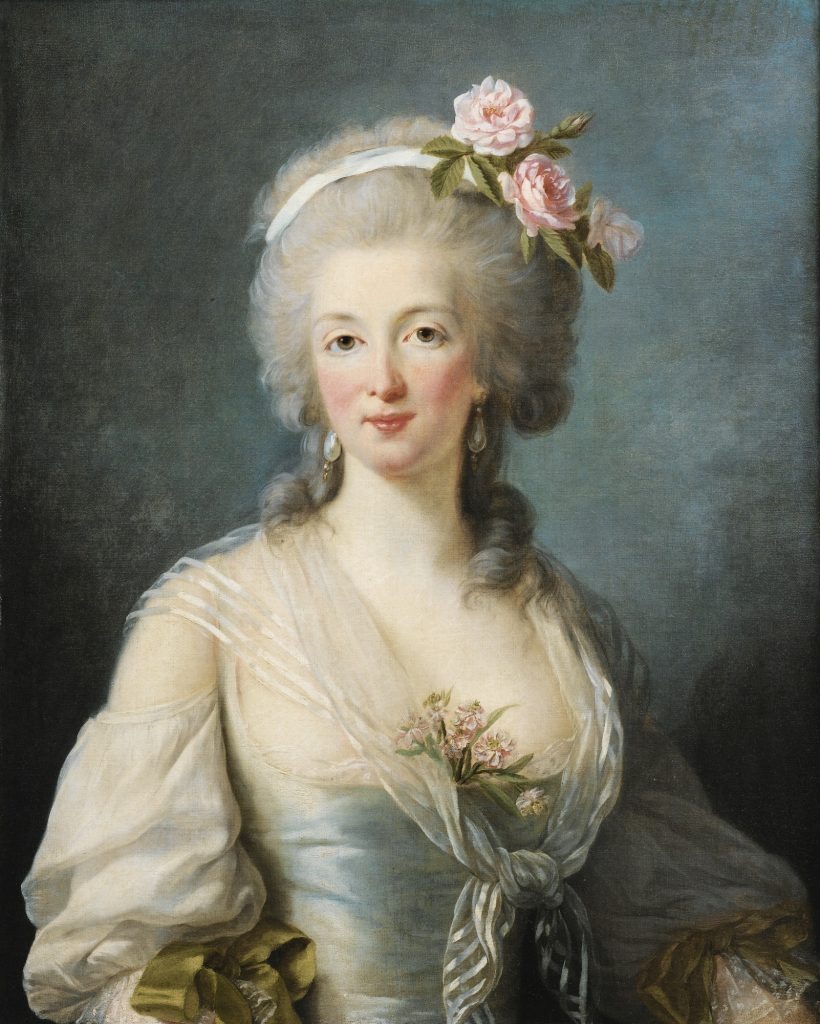
Shortly after arriving in Versailles, Jeanne began frequenting the royal court in order to attract the attention of Marie Antoinette. The Queen, for her part, had received advanced warning of Jeanne’s already dubious reputation, and all attempts at a meeting were spurned. It was not entirely a loss, however, because Jeanne did meet several other prominent members at court. In particular, she soon made the acquaintance of the Cardinal de Rohan. Like Jeanne, he was desperate to find favour with the Queen.
The Cardinal de Rohan was a member of one of France’s most distinguished and prominent families. He aspired to become a minister in King Louis XVI’s court, but there was one small problem. Marie Antoinette despised him. He had previously slandered both the Queen and her mother through official letters and court gossip, and he now found himself barred from the political appointments he so dearly desired. It would seem that Jeanne and Rohan bonded over their shared ambitions, and Jeanne endeared herself to the Cardinal by claiming to be a close friend of the Queen. In short order, they became both confidantes and lovers.
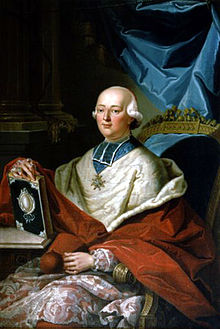
Over the next several months, Rohan entered into a series of correspondences with the Queen, using Jeanne as the intermediary. Over time, the letters grew reconciliatory in tone, and then outright amorous. So much so that Rohan began to believe that Marie Antoinette was in love with him. Convinced that he had won the heart of the Queen, he demanded that Jeanne arrange a face to face meeting. Little did he know that he was not actually corresponding with Marie Antoinette, but rather with a man by the name of Rétaux de la Villette. It was Rétaux, a master forger, who had written all of the letters from the Queen that Jeanne had then passed on to Rohan. Rétaux had become a conspirator because he was also having an affair with Jeanne. Because of course he was.
Jeanne, Rétaux, and Nicholas, because yes, her husband was still in the picture, now found themselves in a tight spot. How could they produce a Queen when none of them had yet to even speak with Marie Antoinette? Undeterred, Jeanne sent Nicholas to the Palais Royale in Paris to find a suitable lookalike. At the time, the Palais Royale was famous for its ladies of the night, and after several searches, Nicholas came across a woman by the name of Nicole Le Guay d’Oliva. The young woman bore a striking resemblance to the Queen, and with the double secured, a date for a secret rendezvous was set.
On August 12th, 1784, Jeanne led Rohan into the darkness of the gardens of Versailles. There, they came across a beautifully dressed woman who was waiting for him. Her features were hidden in the shadows and she held a fan that partially obscured her face. Nevertheless, Rohan was convinced that he was in the presence of Marie Antoinette. He bowed before her and she handed him a rose. She then declared that all was forgiven between them. Rohan was ecstatic. He was promptly whisked away by Jeanne before the conversation could go any further, but it didn’t matter to him. All that mattered was that he was back in the Queen’s favour. He believed that his political future was now secure.
Not long after their meeting, Rohan received word from the “Queen” that she needed his help. She wished to purchase a diamond necklace from the crown jewellers, but she needed an intermediary so as not to upset the King with its extravagant cost. Rohan readily agreed, and proceeded to present himself to Boehmer and Bassange in order to negotiate a payment plan of four instalments over the next two years. Overjoyed to have finally found a buyer, Boehmer and Bassange turned the necklace over to Rohan, who in turn gave it to Jeanne to pass along to the Queen. As I’m sure you’ve probably already guessed, Jeanne turned around and gave the necklace to her husband, who in turn quickly set off to London to disassemble it and sell the jewels. The famed diamond necklace was never seen in tact again.
For a couple of months, it looked like Jeanne had gotten away with her plan. That is, until it came time for the first payment to be made. Rohan was unable to come up with the money himself, and seeking their payment, Boehmer and Bassange went above him and petitioned the Queen directly. Understandably, Marie Antoinette was rather confused by their demand for payment for a necklace she had previously refused. When questioned further, the jewellers outed Rohan as the broker of the sale. On August 15th, 1785, Rohan was publicly arrested on his way to deliver mass at Versailles. He was immediately brought before the King and Queen and ordered to explain the situation.
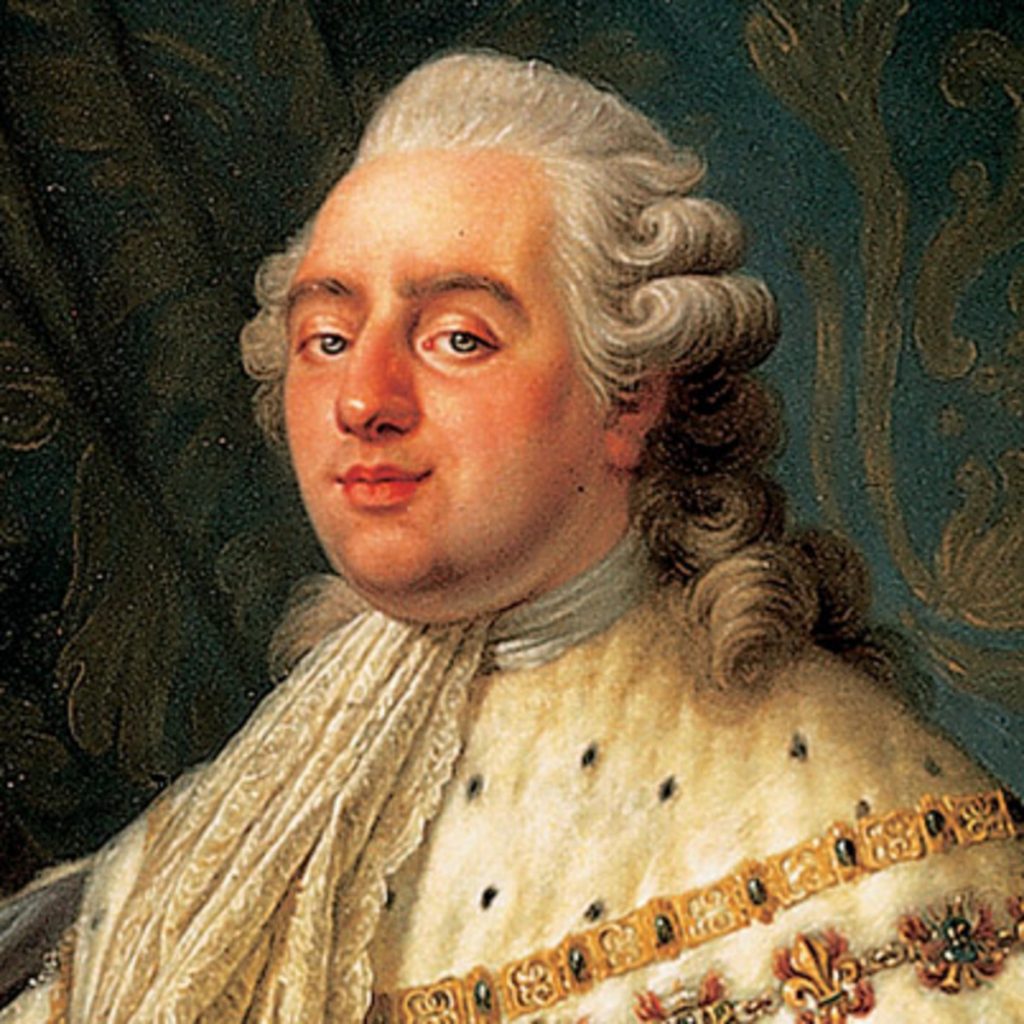
Rohan attempted to defend himself by producing the letters asking him to buy the necklace on the Queen’s behalf. Unfortunately for him, these letters were quickly determined to be fake, as they had all been signed ‘Marie Antoinette de France’. It was well known among the nobility that royalty only signed with their baptismal names, meaning that the ‘de France’ should have alerted Rohan to the scam. Incensed that the Cardinal had been so easily duped, the King ordered him to be sent to the Bastille. An investigation into the matter was undertaken, and within days, Jeanne, Rétaux, Nicholas, and Nicole were all arrested.
Due to the very public nature in which Rohan had been confronted, word got out quickly about the affair. Unsurprisingly, the story caused a sensation in France. Gossip was rife in the streets, and before long, the court of public opinion delivered its verdict. The Queen, who claimed no knowledge of the affair, was determined to be the guilty party. Her hatred of Rohan was well known even outside of the court of Versailles, and the people now believed that he had been set up to take the fall for the Queen’s extravagant tastes. It didn’t matter that the police had the real culprits in custody. In the eyes of the public, Marie Antoinette was to blame.
In response, Louis ordered a public trial to settle the matter and exonerate his wife. To this end, he was successful. The court found Jeanne, Rétaux, and Nicholas to be guilty. Rétaux was banished, Nicholas was condemned to be a galley slave, and Jeanne was to be whipped, branded, and sentenced to life imprisonment. Nicole was acquitted, as was Alessandro di Cagliostro, a noble who was accused by Jeanne during the trial of orchestrating the scam. Rohan was also acquitted, but Louis still banished him to the south of France anyway. Most importantly, the court determined that Marie Antoinette was innocent of her alleged part in the scandal.
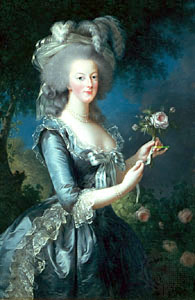
Public opinion, however, was not so easily swayed. The verdicts were decried as a cover up, and the people persisted in their belief that the Queen was truly to blame. They saw Rohan’s banishment as Marie Antoinette’s final act of revenge against the man she so detested, with Jeanne and her accomplices being merely pawns in the Queen’s game. Instead of clearing her name, the Affair of the Diamond Necklace irreparably destroyed Marie Antoinette’s reputation among the people. The French Revolution would break out just four year later, and four years after that, the former Queen would meet her untimely end at the hands of the guillotine. Napoleon later remarked that, “The queen’s death must be dated from the diamond necklace trial.” Nearly three centuries later, many historians agree.
So what ever happened to the real mastermind behind the Affair of the Diamond Necklace? Perhaps unsurprisingly, Jeanne only lasted less than a year in prison before she escaped and fled to London. Once there, she continued her life as a con artist, swindling numerous wealthy patrons and engaging in a series of affairs. In 1789, she caused yet another sensation when she published her memoirs, in which she once again laid the blame for the Affair of the Diamond Necklace entirely at the feet of Marie Antoinette. Jeanne’s wild life finally caught up to her in 1791, when she jumped through a window in order to escape her debt collectors. She died from her injuries a few days later at the age of 35. Jeanne may not have lived long enough to have seen the fate of Marie Antoinette, but their lives will forever be entwined.
_______________________________________________________________
Want more Stories of Paris like The Affair of the Diamond Necklace? Click HERE.
_______________________________________________________________
Laura Moore is a professional storyteller who loves history and the many stories that make Paris one of the most fascinating cities in the world. Join one of her signature tours to learn the story of a city.



